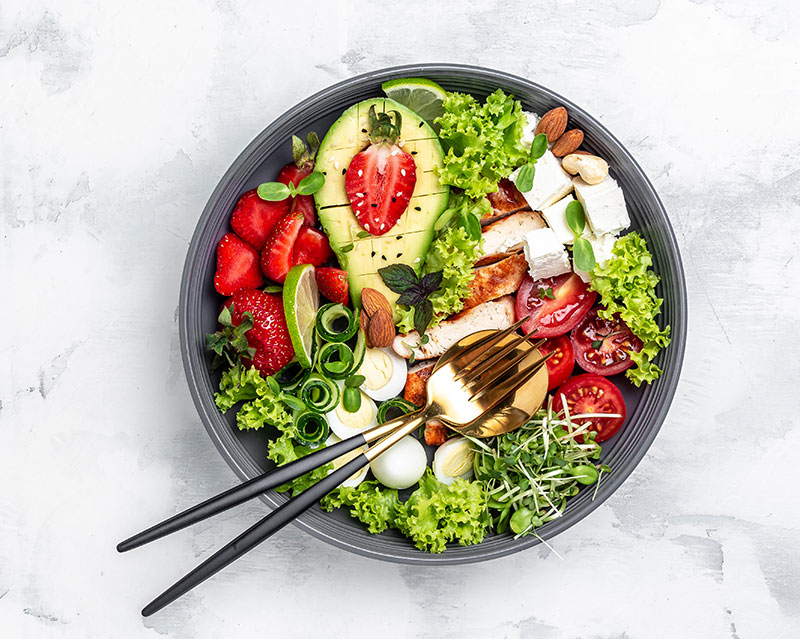Goal Setting for Healthy Living with a Disability
By Tracy Williams, Tracy's Plate
Everyone deserves to live their own version of a healthy lifestyle. It does not matter if you hve a disability or not. Registered dietitians and other healthcare professionals should also realize that disabled clients have their own picture of success towards a healthier adaptive lifestyle. Success looks different for each individual, especially for those living with disabilities.
Keep Your Goals Realistic and Bite-Sized
Accomplishing goals makes everyone feel successful and more confident. Caroline Susie, RD, LD, owner of Dietitian by Day, Foodie By Night advocates for the use of SMART goal setting. She says keeping goals specific prevents them from getting too broad or too complicated. Focusing on measurable goals may cause you to feel more accomplished as you inch towards achieving them. Your goals need to be personal to you to keep yourself motivated or give yourself the courage to try again.

Sometimes while living with a disability, goals should be open-ended, because you never know what you need to learn or relearn to achieve them. An example of a goal for people living with disabilities might be to make attempts at adaptive fitness with resistance bands for light upper body or lower body strength work for 20 to 30 minutes for 3 days a week.
Another example may be to improve your hydration levels by increasing your water consumption by 2 or 3 glasses for 3 days a week. You could also have a goal of increasing your fruit and veggie consumption by 1 or 2 servings for 4 days a week. Another goal might be to increase whole grain consumption by 1 or 2 servings for 4 days a week. Just keep it small, manageable and achievable!
Think Mediterranean for a Favorite Meal Plan
Everyone wants to know what registered dietitians think about popular eating plans. Ms. Susie likes to promote the use of the Mediterranean Diet. Medical research demonstrates that this diet plan supports prevention of cognitive decline, promotes a healthy heart, as well as healthy aging and prevention of other chronic conditions.

She loves the meal plan because there are no hard and fast restrictions or rules. Most registered dietitians who encourage a healthy relationship with food love this food plan because it only advocates what foods to eat more of daily, while also focusing on what food to consume less of daily.
The Mayo Clinic says to make a priority of consuming whole grains, vegetables, legumes, fruits, nuts and seeds, as well as herbs and spices as the foundation of the diet. Olive oil and avocado oil are both the main source of fat instead of butter. Fish, seafood, dairy and poultry are incorporated two or three times a week. Red meat and sweets and sugary beverages are consumed only very rarely.
Meal Planning is Key to Healthy Eating
Susie recommends that everyone have plan, no matter if they use adaptive cooking tools or not.
A meal plan is just that, a plan! It is not meant to be limiting or restrictive. Registered dietitians want to inspire their clients to have a plan because otherwise chaos might ensue meaning that you might order out multiple nights a week, which could turn out to mostly be fast food.
Ms. Susie assists her clients to make a plan so that each individual family can make a grocery list based on their personal plan. It is a great idea to chop once but use throughout the week.
Ms. Susie fosters her clients to be aware of the number of servings from each recipe from any popular cookbook. Many recipes serve anywhere between four and eight. If you live alone, this could be too much food. Do not forget, you can half the recipe! These choices can also cut down food waste and food costs.
Organic Versus Conventionally Grown Produce
The U.S. Department of Agriculture (USDA) has set up an organic certification program that requires all organic food to meet strict government standards. Most consumers think organic is benign, more nutritious and pesticide free compared to conventionally grown produce.
Ms. Susie likes to recap to her clients that organic farming is only a unique farming practice, not better. As an example, a woman could eat 453 servings of strawberries in 1 day without being affected, even if the strawberries have the highest pesticide residue recorded from the United States Department of Agriculture. Most dietitians like to say that conventional produce is safe and does cost less especially in this time of food inflation.
Goal setting takes creativity and tenacity if you are living with any type of disability. Healthy meal planning is a unique journey especially if you must use adaptive cooking skills. There is so much debate between conventionally grown produce and organic produce. It is all such a personal choice depending on your budget. Living with a disability does have its ups and downs, but it is all about mindset.
About the Author:
Tracy Williams has moderate cerebral palsy and other chronic conditions. She is a public speaker, freelance writer, disability advocate and food access advocate. She has her degree in Nutrition and Dietetics from Dominican University. She will be speaking on June 23, 2023 at Abilities Expo Chicago. Her presentation is titled "Ready, Set, Win: How to Be Healthy on Your Own Terms." She looks forward to inspiring lifestyle change for peers with disabilities. You can connect with her on www.tracysplate.com.
Pre-Register for Abilities Expo Today...It's Free!